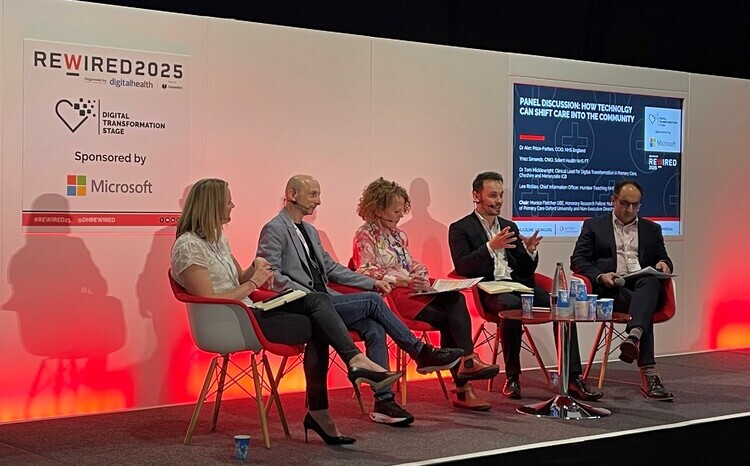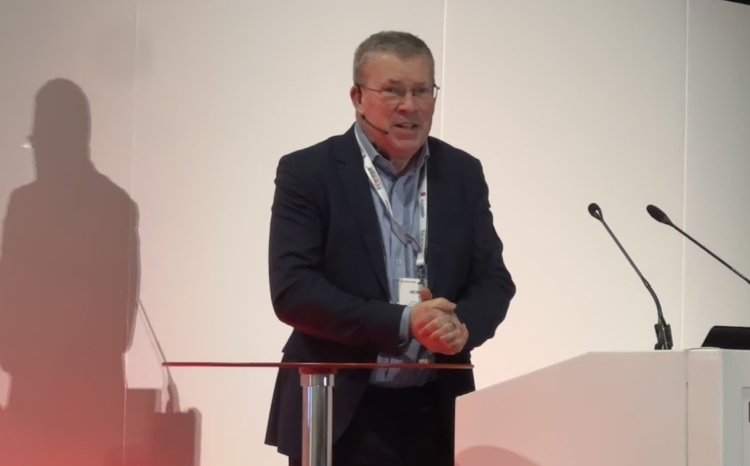Judy Faulkner: Epic interview
- 3 December 2015

In the male-dominated US technology sector Judy Faulkner, the founder and head of Epic Systems, is regarded as a phenomenon.
For a graduate school project as a computer and maths student she developed an electronic patient record in her basement, which has grown into a multi-billion firm.
In 1979 she founded a health software company, later renamed Epic, which developed the first EMR graphical user interface, based on ‘one patient one record’, and then steadily grew by word of mouth.
Epic is privately held, never taken investment, never made an acquisition and has a passionate belief that “comprehensive” software is better. The company states it has never had a failure, partly by being very picky about which customers it works with and having a rigorous methodology.
Quiet but in control
In person, Faulkner’s quietly spoken and engaging, but also highly focused, very clearly in control and utterly certain the ‘Epic way’ is simply the right way to deliver digital health properly. In fact, she seems slightly perplexed anyone would try a different approach.
In conversation Faulkner often refers to herself as a ‘maths and computer science person’. She may no longer write code, but she remains at her core a developer.
Of its 9,000 staff, of which 50% are R&D, Faulkner says Epic has “just 7-8 on sales worldwide”. The company likes instead to engage directly with boards’ senior executives.
“We are somewhat reactive in sales,” admits Faulkner, “that’s because when we started Epic, I am a technical person, I had no idea how to do sales, as a result the sales we did were those who contacted us and that just stuck.”
A key milestone came in 2003 when Epic was chosen by Kaiser Permanente in a (US) $4 billion electronic patient record investment.
Kaiser become a reference site and growth took off for Epic, with a string of prestigious healthcare customers choosing the software, now including; UCLA Health, Massachusetts General Hospital, John Hopkins, Cleveland Clinic and more recently, the Mayo Clinic.
By 2009, when the US Government invested (US)$30 billion in EMRs through the HITECH initiative, Epic was in poll position and its growth ever since has been explosive.
| Faulkner facts | |
| In May 2015, Forbes named Judy Faulkner the most successful female technology company founder, citing her net worth at $2.6 billion. | |
| Faulkner has signed the Giving Pledge to donate 99% of her assets to charity. | |
| EpicCare is used by two thirds of the academic teaching hospitals in the US and 70% of HIMMS Stage 7 hospitals. | |
| Academic medical centres running Epic educate 64% of all US medical students and residents. |
The customer story
In the UK, Epic is live at Cambridge University Hospitals NHS Foundation Trust, is preferred supplier at Royal Devon and Exeter NHS Foundation Trust and in the running at University College London Hospitals NHS Foundation Trust, Great Ormond Street Hospital NHS Foundation Trust and others.
Epic has a reputation for being very selective about customers. Faulkner initially says this is over-stated, though acknowledges they will only work with customers committed to making fundamental changes.
“We don’t have any failures and we don’t want any failures. So to some extent that’s right, but by no means does an organisation have to be close to perfect before we say we’ll work with them.
“In order for the customer not to waste their money and not to have a failure, they’ve got to have people at a senior level who want to do this and are behind this.
“Beyond that we’ve worked with many different groups, from safety net organisations with very few resources and on the verge of falling apart.”
With such a heavy emphasis on following a proven, but highly prescriptive installation approach, are customers actually buying a methodology or software?
Faulkner, a software developer at heart, doesn’t like this characterisation: “I’ve heard people say that, and as a software developer, I think they’re not paying our software enough credit. The software is absolutely critical to the success of the implementation.”
Not a stitch-up job
The core segments of Epic’s software are in the outpatient and inpatient electronic medical record, plus inpatient and outpatient billing, all covered by EpicCare.
On top of this sits the integrated myChart personal health record, the most widely used patient portal in the US. All have been developed as a fully integrated suite, sharing a common architecture, applications and data.
“What our customers say is that having one system that works seamlessly, where all the data is there for everyone authorised, saves them money. It’s all the same user interface, it makes it smooth and easy,” explains Faulkner.
While some systems come as modules you then have to start fitting together, Epic comes “almost pre-stitched together”.
Faulkner argues that this single integrated system approach is better than a series of interfaced systems.
“The optimisation of the parts does not mean the optimisation of the whole”.
Asked whether, with the benefit of almost 40 years experience, she would still architect a system the same way, Faulkner doesn’t hesitate.: “Yes. It’s a very good model.
“But keep in mind that not a single line of my original code is still in use. The concept is excellent, but the execution has changed very much over time as we use different technologies.”
Cost of success
One of the most common criticisms of Epic is its high cost. Again Faulkner says that, when compared to rivals, this is an unwarranted reputation and Epic is honest about pricing.
At Cambridge, the cost of the EMR software is roughly a fifth of the total £200m eHospital programme.
She told Digital Health that it is frustrating to bid against other suppliers who low-ball the headline price, only to add in extra cost later down the line.
“When you look at other vendors’ bids you end up paying the same price, its just you don’t know it in advance. It makes it very difficult to respond to bids because we don’t want to do that and yet when we come in sometimes at a higher price because we are really mapping out what the cost is.
And she says Epic customers see value for all that money.
Faulkner provides a series of charts, first on productivity benefits, showing cost savings from using the software.
She says that one of the key benefits customers get from Epic is integrated billing and clinicals.
Pointing to US customers, she says, “If you look at the operating margins of HIMSS Stage 7 awardees there was a big jump up in operating margins when you hit stage 7, but we don’t know causality.”
Beyond the fence
The other key charge leveled at Epic is that it is essentially a closed system, great when you are on the inside, but doesn’t play well with non-Epic users. The organisation is not part of the industry Commonwell Health Alliance on interoperability.
Faulkner rejects the criticism and has a few more charts at hand to help make her case. These include Klas reports that rate Epic as the most sophisticated and interoperable of the major EMR suppliers.
“We’ve been doing interoperability since 2005,” she says of the Care Anywhere platform that enables sharing between Epic EMRs and non-Epic EMRs. “18.5 million records were exchanged last month and 20 million will be next month [November].”
Epic has also joined other key health IT players in the Argonaut Project, an initiative to accelerate development and adoption of HL7's Fast Healthcare Interoperability Resources.
Asked what next for Epic, Faulkner says much more of the same and extending more to community care.
She also predicts that predictive analytics, embedded into EMRs, will become more and more important.
Creating a home for developers
Asked about her proudest achievement to date, she says: “Probably when people say what great staff we have. It’s been the ability to figure out how to hire, how to orient and how to keep the culture so we are consistent in the delivery of what we need to do for all of our customers.”
A key part of this has been to create a physical environment in its Verona Wisonsin campus that enables developers to flourish, be creative and do good work.
This includes a treehouse meeting room: “Everyone needs a corporate tree house,” Faulkner deadpans.
“Epic has to compete with Apple, Google, Facebook etc. to hire developers, so we want an environment where people feel, ‘I want to work here’ and be absolutely as productive as possible,” she adds.
The theme of keeping commitments is one she returns to repeatedly during the interview.
“The key thing to our culture is the sense of keeping our commitments. We know that when a healthcare organisation buys our software they are trusting us to deliver,” she says.




